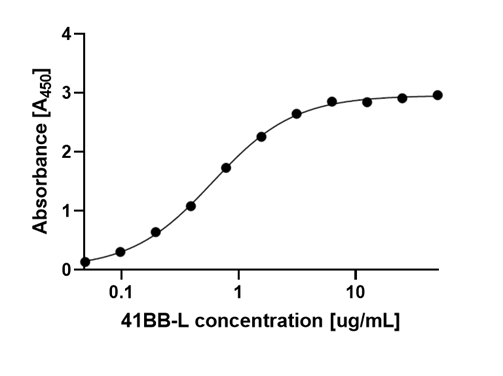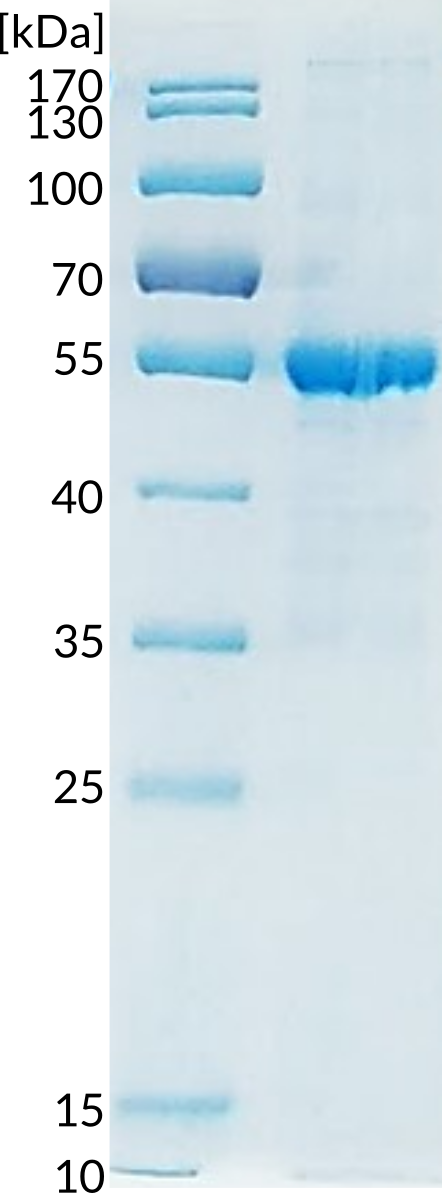| Alternative names | N/A |
| Known ligands | 4-1BB |
| Origin | Homo sapiens |
| Accession number | P41273 |



4-1BB is a member of TNFR superfamily. Along with its receptor (4-1BB, Tumor necrosis factor receptor superfamily member 9), the complex exhibits architecture common for other TNF receptor-ligand complexes, i.e. homotrimeric unit of 4-1BBL binds 3 monomeric units of 4-1BB (1). 4-1BB/4-1BBL is a costimulatory signaling pathway. Stimulation of TCR along with costimulatory signal leads to T cell activation and release of cytokines such as IFN-γ and IL-2 (2). 4-1BBL also exhibits “reverse signaling”. Signal transduced through 4-1BBL leads to B-cell proliferation, upregulation of IL-6, IL-8 and TNF-α expression as well as production of macrophage-colony stimulating factor (3). 4-1BBL is expressed on stimulated antigen presenting cells – dendritic cells and macrophages, as well as activated B cells (4, 5). 4-1BBL can also be cleaved from cell surface and released as a soluble, active protein (2).
- Chin, S. Michael, et al. “Structure of the 4-1BB/4-1BBL complex and distinct binding and functional properties of utomilumab and urelumab.” Nature communications 9.1 (2018): 1-13.
- Salih, Helmut R., et al. “Soluble CD137 (4-1BB) ligand is released following leukocyte activation and is found in sera of patients with hematological malignancies.” The Journal of Immunology 167.7 (2001): 4059-4066.
- Kwon, Byungsuk, et al. “4-1BB: still in the midst of darkness.” Molecules and cells 10.2 (2000): 119-126.
- Alderson, Mark R., et al. “Moslecular and biological characterization of human 4‐1BB and its ligands.” European journal of immunology 24.9 (1994): 2219-2227.
- Cheuk, Adam TC, Ghulam J. Mufti, and Barbara-ann Guinn. “Role of 4-1BB: 4-1BB ligand in cancer immunotherapy.” Cancer gene therapy 11.3 (2004): 215-226.
